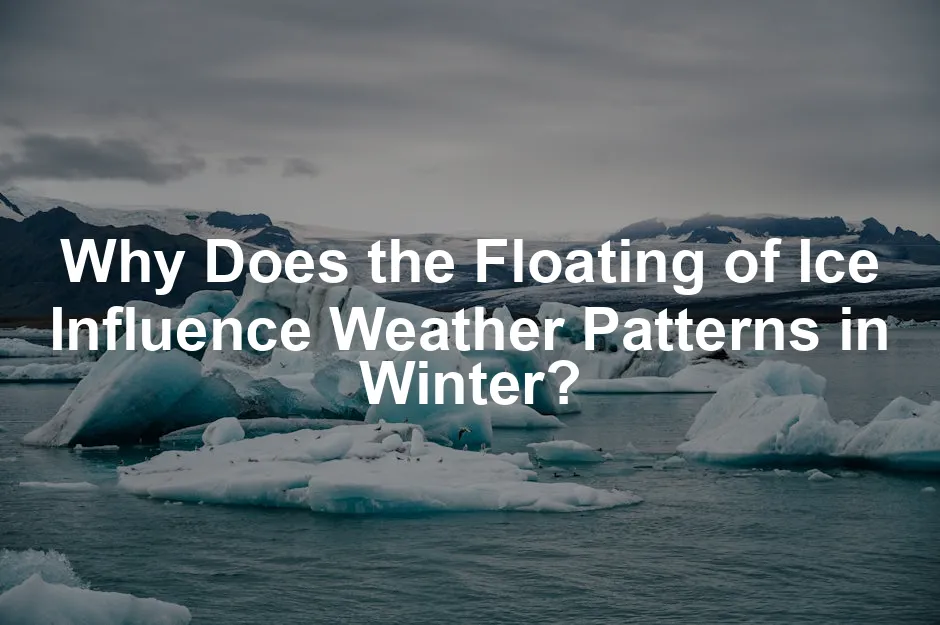
Why Does the Floating of Ice Influence Weather Patterns in Winter?
Introduction
Ice isn’t just for your drink; it plays a crucial role in our climate and weather systems. When you think about winter, you may picture cozy fires and hot cocoa, but what about the vast expanses of frozen water that shape our climate? The floating ice, particularly in polar regions, does far more than just create a winter wonderland—it’s a powerful influencer of global weather patterns. The relationship between floating ice and winter weather is intricate, and understanding it is essential for grasping the broader impacts of climate change. Floating ice significantly influences the global climate system through several mechanisms. For starters, it regulates ocean temperatures. As ice forms and melts, it affects salinity levels and the density of seawater. This, in turn, contributes to the global ocean conveyor belt, a critical process that drives ocean circulation and impacts weather patterns worldwide. Additionally, ice plays a vital role in the albedo effect, which reflects sunlight back into space. A reduction in ice cover means more heat absorption by darker ocean waters, leading to a warming cycle that can alter weather patterns. Moreover, the dynamics of floating ice can disrupt traditional weather patterns. Changes in sea ice extent can lead to shifts in atmospheric pressure systems, impacting wind patterns and altering precipitation. As we delve into the world of floating ice, it’s clear that our understanding of winter weather is incomplete without considering the influence of these icy formations.
Speaking of icy formations, if you love your drinks ice-cold, why not check out this Silicone Ice Cube Tray? It’s perfect for making those large, slow-melting ice cubes that keep your drinks cool without watering them down.
Summary
As winter descends upon the Earth, floating sea ice in the Arctic and Antarctic becomes a pivotal factor in shaping weather patterns across the globe. Ice plays a multifaceted role: it regulates ocean temperatures, affects ocean circulation, and contributes to the albedo effect, reflecting sunlight back into space. This article examines the importance of sea ice, its seasonal dynamics, and how its melting can disrupt traditional weather patterns. Key points include:- Ocean Temperature Regulation: Sea ice influences ocean temperatures and salinity, which are critical for the global ocean conveyor belt. Cold, dense water sinks, driving circulation that affects climate.
- Albedo Effect: The high reflectivity of ice surfaces helps maintain cooler temperatures. When ice melts, darker ocean waters absorb more heat, exacerbating warming cycles.
- Impact on Atmospheric Circulation: The retreat of ice alters atmospheric pressure systems. This leads to changes in wind patterns and precipitation, resulting in unpredictable weather.
- Influence on Wildlife and Ecosystems: The melting ice affects habitats of various species. Polar bears, seals, and krill depend on ice for survival.
- Global Weather Patterns: The interaction between ice dynamics and atmospheric conditions can create extreme weather events. For instance, cold snaps in Europe or heatwaves in North America can often be linked to changes in sea ice.
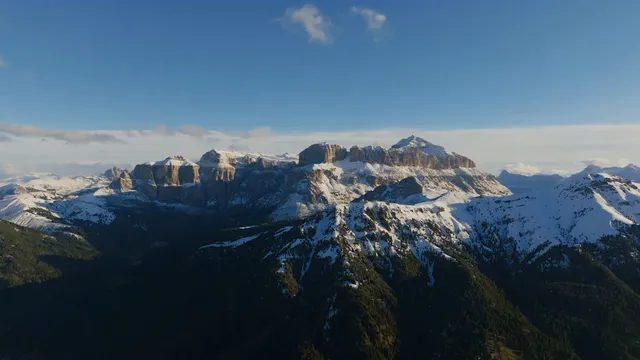
And while you’re at it, why not keep warm with a cozy drink? A Hot Cocoa Set could be just what you need for those chilly winter nights!
Impact on Atmospheric Circulation
The retreat of floating ice significantly alters atmospheric pressure systems. When large areas of ice melt, it reduces the cold air masses that usually dominate polar regions. This change can lead to a decrease in high-pressure systems, which are essential for stable weather patterns. The result? Wind patterns become more unpredictable. In fact, the jet stream—a fast-flowing air current high in the atmosphere—can become more erratic. This erratic behavior can bring cold Arctic air further south, resulting in frigid temperatures in areas like Europe and North America. Meanwhile, other regions may experience warmer temperatures as the displaced air masses shift. Such changes can lead to unusual precipitation patterns, with some areas receiving excessive rain while others suffer drought. The interaction between melting ice and atmospheric dynamics is complex. It’s a bit like a game of chess: one move can lead to unexpected consequences down the line. So, as we see the ice diminish, we must brace ourselves for an unpredictable winter!
To make your winter adventures more enjoyable, consider investing in an insulated winter jacket. Staying warm is key when braving the elements!
Influence on Wildlife and Ecosystems
The melting ice doesn’t just affect the weather; it’s a game changer for wildlife and ecosystems, too. Species like polar bears rely on sea ice to hunt seals, their primary food source. As the ice retreats, these bears find it increasingly difficult to find food. This can lead to malnutrition and lower population numbers. Meanwhile, beneath the ice, the ecosystem is also in turmoil. Sea ice acts as a habitat for various marine organisms, including phytoplankton, which form the foundation of the marine food web. When ice melts, it releases nutrients that can initially boost phytoplankton growth. However, the subsequent warming of ocean waters can disrupt this delicate balance, leading to harmful algal blooms instead. In essence, the cascading effects of melting ice create a ripple effect throughout the entire ecosystem. From the Arctic fox to the smallest plankton, everyone is feeling the heat—literally!
If you’re a fan of wildlife, check out this amazing Arctic Wildlife Documentary DVD to get a closer look at these magnificent creatures in their natural habitat!
Global Weather Patterns
The dynamics between ice and atmospheric conditions can lead to extreme weather events globally. For instance, the interaction between a melting Arctic and the warmer ocean can create conditions ripe for severe winter storms. These storms can bring about unexpected cold snaps in Europe and heatwaves in North America. In recent years, we’ve seen how changes in ice cover correlate with shifts in weather patterns. The more ice melts, the more we can expect bizarre weather—like winter storms that seem to arrive out of nowhere.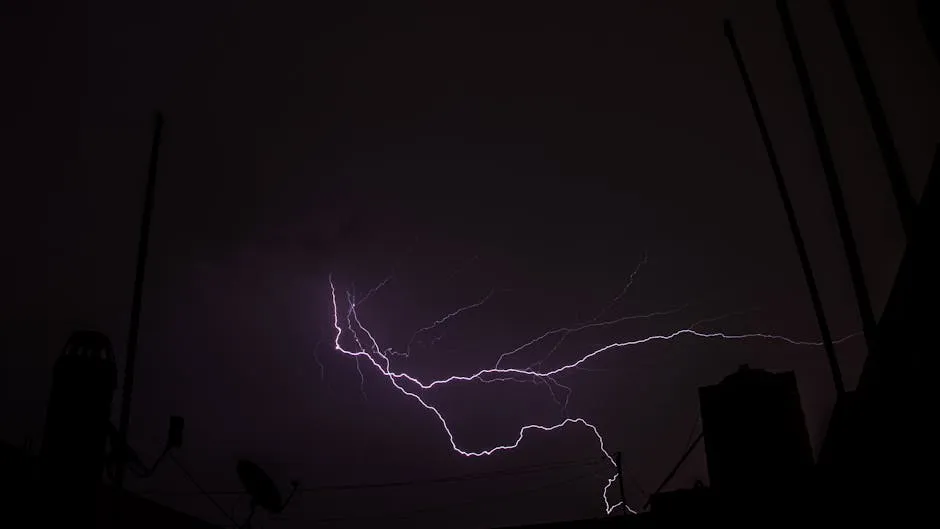
And when those unexpected storms hit, having a reliable snow shovel can be a lifesaver. Don’t get caught unprepared!
Understanding Albedo
Albedo refers to the reflectivity of a surface. In climate science, it’s a big deal! Ice has high albedo, meaning it reflects a lot of sunlight. This keeps polar regions cooler. As ice melts, darker ocean waters are exposed. These waters absorb more heat. This process is essential in understanding climate change. When ice cover decreases, less sunlight is reflected. The consequences? Warmer ocean temperatures and accelerated ice melt. This cycle continues, creating a feedback loop. Increased heat absorption leads to more melting, which leads to even more heat absorption. It’s like a never-ending game of tag, but with heat and ice!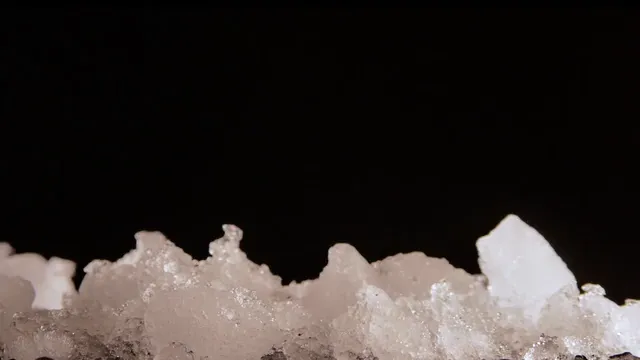
To keep cozy during those chilly nights, consider snuggling up with a cozy throw blanket. It’s perfect for those winter movie nights!
Feedback Loops
Feedback loops are fascinating, albeit alarming. When ice melts, the exposed ocean absorbs heat instead of reflecting it. This leads to increased water temperatures. Warmer water causes further ice melt, which ramps up heat absorption. The cycle repeats itself. This feedback mechanism is crucial for understanding climate dynamics. It’s not just about ice melting; it’s about the larger implications for global temperatures. Each year, this cycle intensifies, leading to more extreme weather events. So, while you sip your cocoa, remember that melting ice is heating up the planet!And for those who love hot beverages, an insulated travel mug can keep your drinks warm while you’re on the go!
Future Projections: The Fate of Sea Ice and Weather Patterns
Climate Change Impacts
Melting Trends Sea ice is experiencing a significant decline. Recent reports indicate that Arctic sea ice extent has decreased by about 13.4% per decade since the 1980s. In 2012, it reached a record low of 3.41 million square kilometers. This trend is alarming, as it not only affects the polar regions but also has widespread implications for global weather patterns. Antarctic sea ice, while showing some variability, has also begun to exhibit troubling trends. For example, the overall extent has shifted in recent years, with unexpected declines observed in certain regions.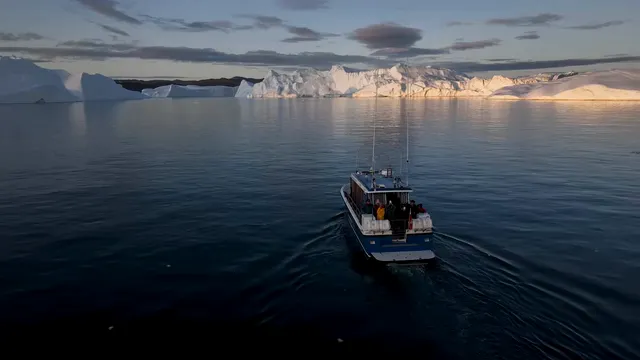
For those who enjoy outdoor winter activities, consider investing in snowshoes. They make winter hiking an absolute joy!
Projected Changes
Looking ahead, climate models suggest that we may see an ice-free Arctic during summer months by the end of the century if current warming trends continue. This loss of ice cover can lead to dramatic alterations in weather patterns worldwide. As ice melts, darker ocean waters absorb more heat, which can intensify heatwaves and alter precipitation patterns. Warmer ocean temperatures can also disrupt the normal flow of ocean currents, further complicating weather systems and contributing to extreme weather events.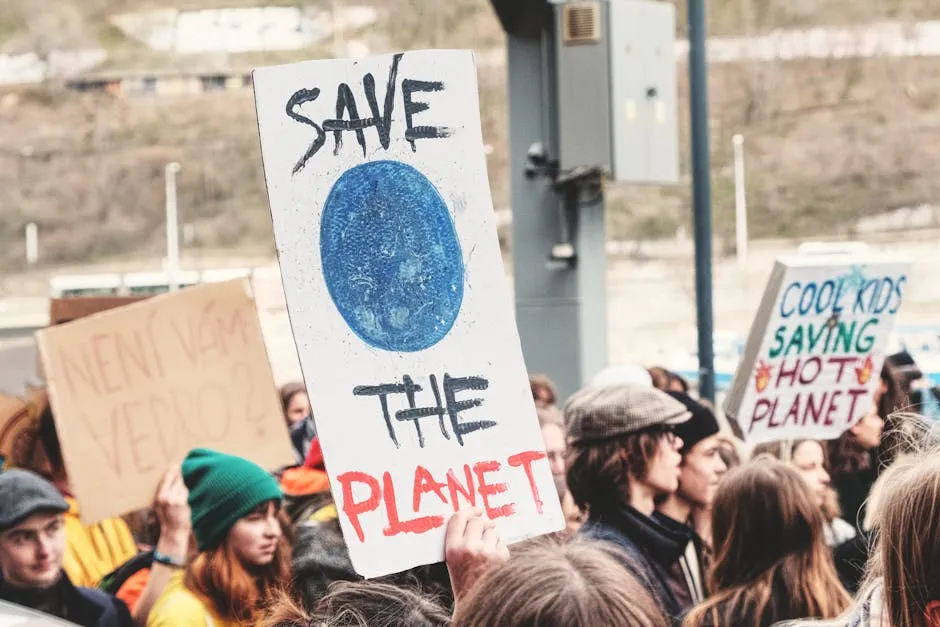
Adaptation and Mitigation Strategies
Global Responses In light of these changes, countries are implementing various strategies to mitigate climate change. Efforts include reducing greenhouse gas emissions, investing in renewable energy, and protecting critical ecosystems. International agreements, like the Paris Agreement, aim to limit global warming to well below 2 degrees Celsius, which is crucial for preserving sea ice and its associated climate benefits. Initiatives to enhance energy efficiency and promote sustainable practices play a vital role in these global responses. Importance of Research Continued research into ice dynamics is essential. Understanding how sea ice interacts with climate systems can help us predict future changes. Scientists are utilizing advanced satellite technologies and climate models to monitor ice conditions and assess their impact on weather patterns. By studying feedback mechanisms, researchers can provide valuable insights into how melting ice influences atmospheric circulation and the broader climate. This research is crucial for developing effective strategies to address the challenges posed by a warming planet. The fate of sea ice is inextricably linked to our global climate. With ongoing monitoring and proactive measures, there is hope that we can mitigate the impacts of climate change and protect our planet’s fragile ecosystems. As we work to adapt and respond, the importance of understanding the connections between sea ice and weather patterns becomes increasingly clear.
And for those who love to get cozy while reading about nature, a nature photography book can take you on a visual journey through the world’s most beautiful landscapes!
FAQs
What is the difference between sea ice and land ice?
Sea ice forms from frozen seawater and floats on oceans. It mainly exists in polar regions, expanding in winter and melting in summer. Land ice, however, is found on continents as glaciers and ice sheets. These ice sheets, like those in Greenland and Antarctica, store a vast amount of freshwater. Both types impact climate, but sea ice plays a more direct role in regulating ocean temperatures and weather patterns.
How does the melting of sea ice affect global sea levels?
A common myth is that melting sea ice contributes to rising sea levels. In reality, since sea ice is already floating, its melting does not change overall sea levels. Think of ice cubes in a glass of water; when they melt, the water level remains the same. However, melting land ice from glaciers and ice sheets adds freshwater to oceans, significantly raising sea levels. This distinction is crucial in understanding the impacts of climate change.
Can we reverse the trends of sea ice melting?
Reversing sea ice melting is a tall order, given current warming trends. However, there is hope! Global efforts to reduce greenhouse gases can slow down these changes. Transitioning to renewable energy sources, enhancing energy efficiency, and protecting ecosystems are all vital steps. While complete reversal may not be feasible, we can certainly slow the decline and protect our planet’s icy regions.
What are the long-term implications of continued ice melting?
Continued melting of sea ice leads to significant consequences. As ice diminishes, darker ocean waters absorb more heat, exacerbating global warming. This process can disrupt weather patterns, leading to more extreme weather events. Additionally, melting ice affects marine ecosystems, threatening species reliant on ice for habitat. Ultimately, these changes can alter ocean circulation and impact global climate, making it crucial to address climate change.
How do scientists monitor sea ice changes?
Scientists utilize advanced technology to monitor sea ice. Satellite observations play a key role, capturing data on ice extent and thickness. Instruments like passive microwave sensors and altimeters provide vital information. These tools help researchers track changes over time, offering insights into climate trends. By combining satellite data with field observations, scientists can better understand the dynamics of sea ice and its broader implications for our climate.
For those chilly days, you might also want to grab a pair of winter boots. Keeping your feet warm is essential for enjoying the outdoors!
Please let us know what you think about our content by leaving a comment down below! Thank you for reading till here 🙂All images from Pexels




